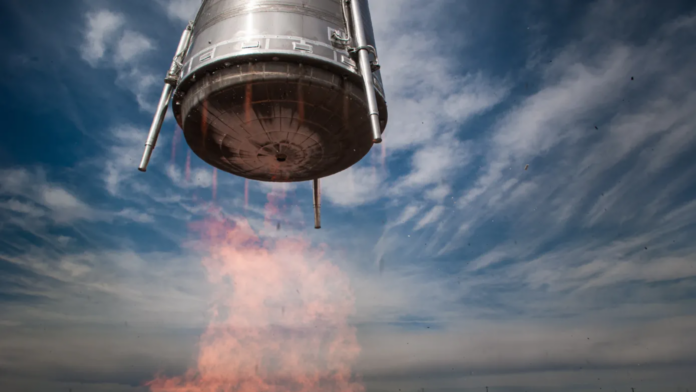Stoke Space, a four-year-old startup, has recently secured $100 million in funding to advance its rocket development and infrastructure. The funding round, led by Industrious Ventures, included participation from renowned organizations such as the University of Michigan, Sparta Group, Long Journey, and other investors. Notably, existing investors like Breakthrough Energy, Y Combinator, Point72 Ventures, NFX, MaC Ventures, Toyota Ventures, and In-Q-Tel also joined in this funding round. With this latest investment, Stoke Space has raised a total of $175 million, including a $65 million Series A funding round closed in December 2021.
Development of the First Rocket
Stoke Space plans to utilize the newly raised capital to fund the development of its first rocket, aptly named “Nova.” This initiative will involve the creation of the first-stage engine and structure, an orbital version of the second stage, and the construction of launch infrastructure at Cape Canaveral in Florida. The funding is crucial for advancing rocket development and achieving significant milestones in Stoke Space’s ambitious journey.
The development of the first rocket is a crucial step for Stoke Space, and the infusion of funds will drive progress in key components of the rocket. Stoke Space aims to solidify the architecture of the second stage before proceeding with the overall development of the vehicle. This strategic approach ensures that Stoke Space fully understands the requirements and specifications of a reusable upper stage and space vehicle.
Completion of a Critical ‘Hop’ Test
Stoke Space recently achieved a major milestone with the successful completion of a critical “hop” test for its reusable upper stage. During this test, the development vehicle reached an altitude of approximately 30 feet and landed vertically about 15 feet away. While these numbers may seem modest, the hop test validated the unique oxygen-hydrogen rocket engine design of Stoke Space’s second stage.
Unlike traditional rocket engines, Stoke Space’s second stage engine features a distributed system with thrusters circling the circumference of the stage. This innovative design allows for improved performance and efficiency. The completion of the hop test signifies the conclusion of the development cycle for the second stage, signifying that the architecture is finalized and Stoke Space can proceed with the rest of the vehicle’s structure.
Unique Design of Stoke’s Second Stage Rocket Engine
One of the key features that sets Stoke Space apart is its novel oxygen-hydrogen rocket engine design for the second stage. Unlike conventional rocket engines with nozzles, Stoke Space’s engine utilizes a distributed system. This means that thrusters are strategically placed around the circumference of the second stage.
The distributed engine design offers multiple advantages, including enhanced maneuverability, better control, and improved fuel efficiency. Stoke Space’s innovative approach to rocket engine design positions them as a leader in the space industry. This unique design sets Stoke Space on a trajectory to achieve its ambitious goals.
Importance of Finalizing the Architecture of the Second Stage
Stoke Space recognizes the significance of finalizing the architecture of the second stage before moving forward with the rest of the vehicle’s development. By ensuring that the reusable upper stage meets the necessary requirements and specifications, Stoke Space lays a strong foundation for the subsequent stages of the vehicle’s creation.
The comprehensive understanding of the second stage’s architecture allows Stoke Space to optimize the design and streamline the development process. This meticulous approach underscores Stoke Space’s commitment to delivering a robust and efficient space vehicle that can pave the way for future space exploration opportunities.
Addition of Steve Angel to Stoke’s Board of Directors
Another exciting development for Stoke Space is the addition of Steve Angel to its board of directors. Steve Angel, the former CEO of Linde plc and a member of the board of GE, brings a wealth of experience and expertise to Stoke Space. With his extensive background in the chemical industry and corporate governance, Angel’s guidance and strategic insights will be instrumental in Stoke Space’s future success.
The appointment of Angel to the board reflects Stoke Space’s commitment to assembling a diverse and accomplished team. It further solidifies Stoke Space’s position as a serious player in the space industry and highlights the company’s dedication to achieving its long-term goals.
Timeline for Stoke Space’s First Orbital Flight Test
Stoke Space’s ultimate objective is to conduct its first orbital flight test by 2025. This target demonstrates the company’s unwavering determination to reach orbit and establish itself as a prominent player in the space exploration sector. Stoke Space acknowledges that there may be exciting opportunities to explore before the orbital flight test and plans to capitalize on them.
To ensure a successful orbital flight test, Stoke Space will carefully plan and adjust its strategy. The timeline will be marked by crucial milestones that will guide Stoke Space’s progress and keep the company on track. These milestones serve as indicators of progress and allow Stoke Space to evaluate its accomplishments as it works towards the transformative goal of orbit.
In conclusion, Stoke Space’s recent funding of $100 million opens up a realm of possibilities for the company. With this capital infusion, Stoke Space can forge ahead with its rocket development, including the creation of the first rocket, named “Nova.” The completion of a critical ‘hop’ test and the unique design of Stoke’s second stage rocket engine showcase the company’s innovation and technological prowess. The addition of Steve Angel to the board of directors further strengthens Stoke Space’s expertise and guidance. With a clear timeline in place, Stoke Space is on track to achieve its first orbital flight test by 2025, solidifying its place in the space industry.





